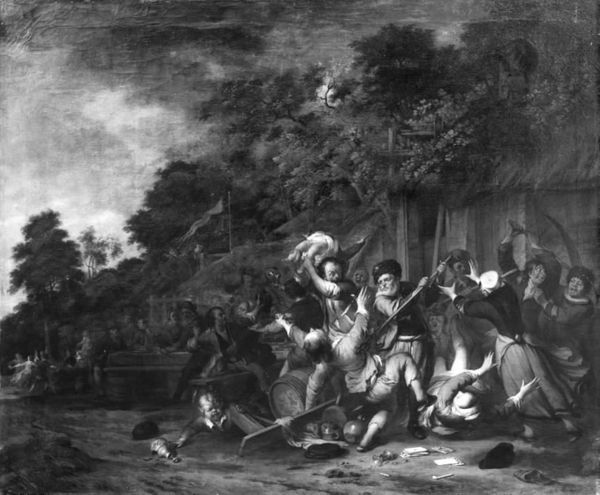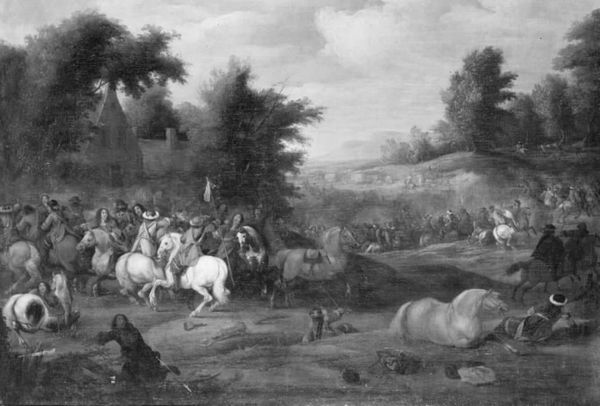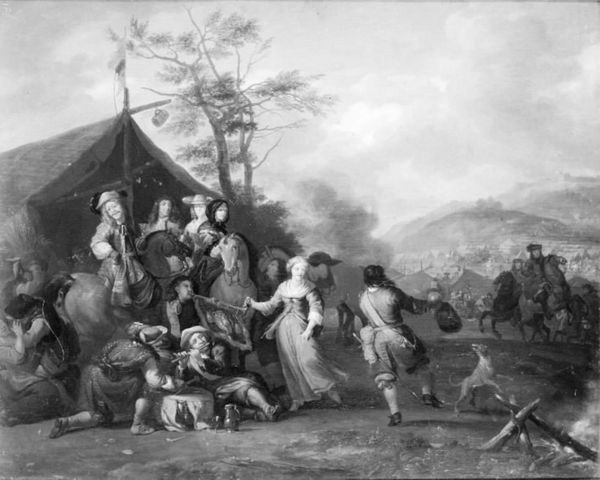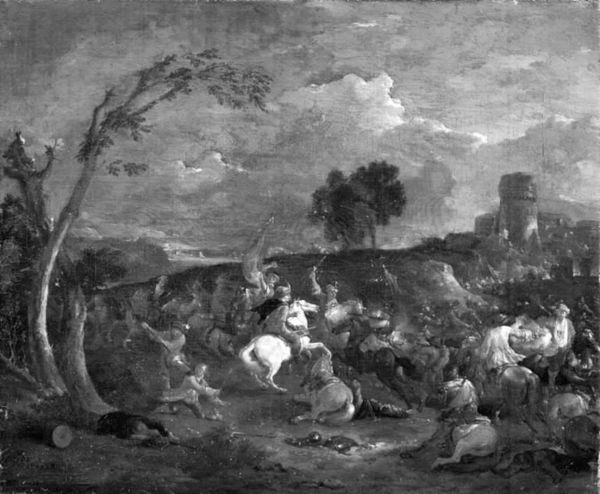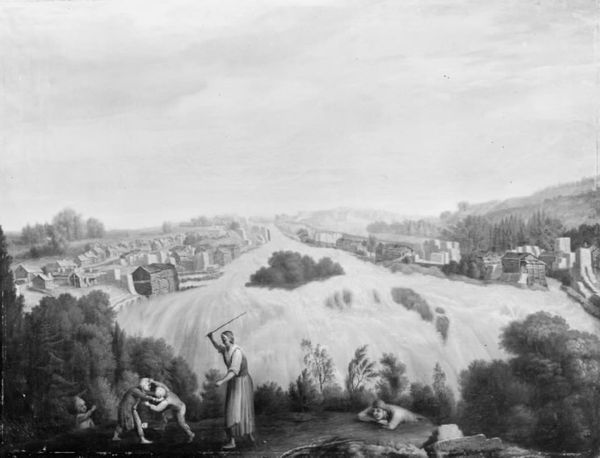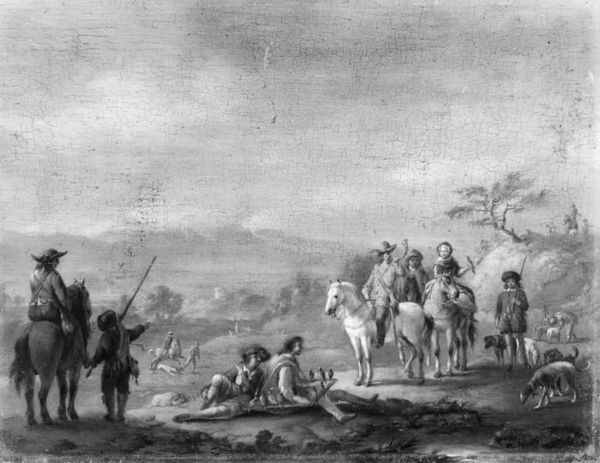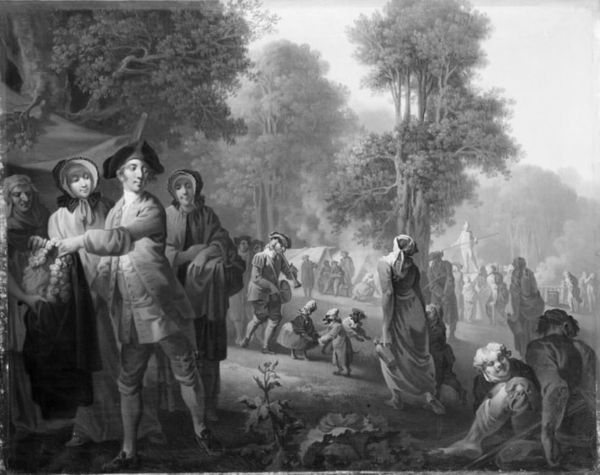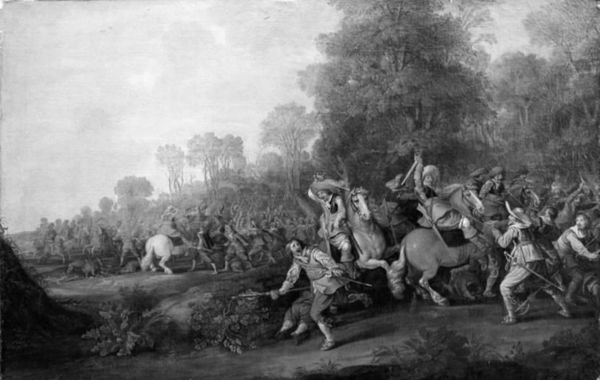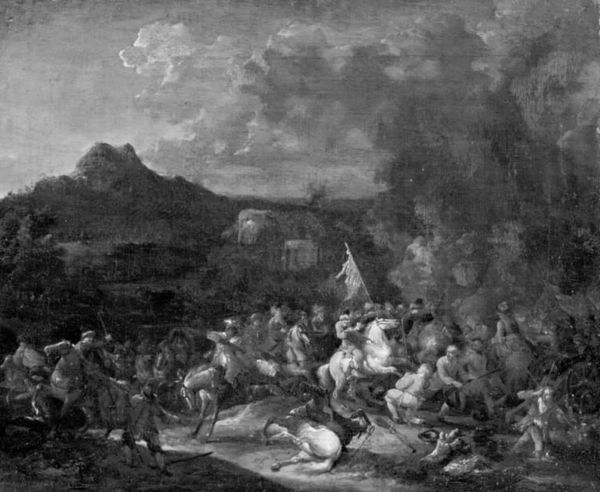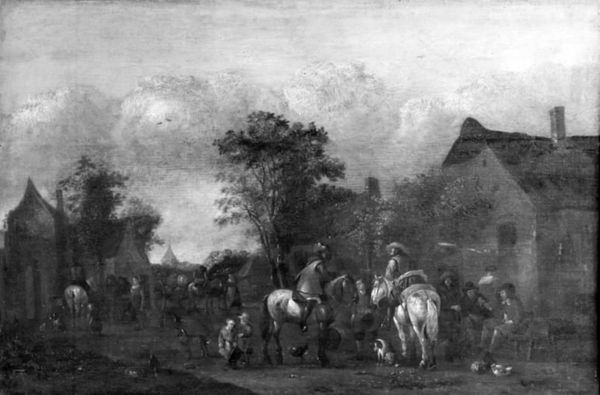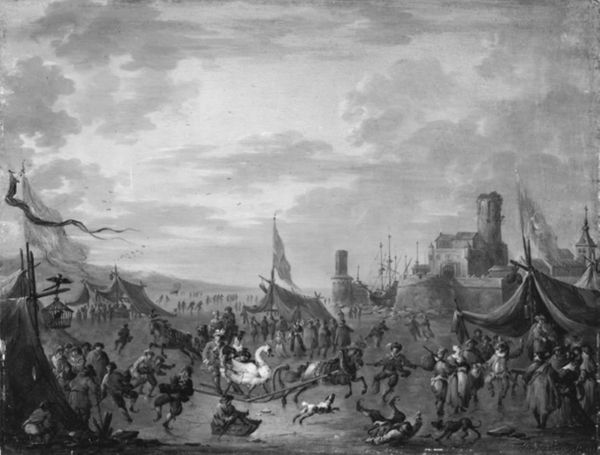
painting, wood
#
baroque
#
painting
#
landscape
#
wood
#
cityscape
#
genre-painting
#
monochrome
#
charcoal
#
monochrome
Dimensions: 25 cm (height) x 32 cm (width) (Netto)
Curator: What strikes me first is the joyous chaos – a whirlwind of figures caught in various stages of revelry. Editor: Indeed! Let's orient our listeners. We're looking at "Landscape with Merrymakers outside an Inn," an early 18th-century work, believed to be from between 1709 and 1719, painted by Arnold Frans Rubens. It's currently held at the SMK, the Statens Museum for Kunst. The support appears to be wood, and the medium, of course, is paint. It practically vibrates with unfiltered exuberance. Curator: Exuberance tempered by social commentary, I'd argue. Genre paintings such as this were deeply ingrained within specific political ideologies in northern Europe at the time. One sees here an effort to make common human pursuits ennobling by emphasizing unbridled passion, but this has real societal implications. What is, and who gets to experience, leisure, in what way, and at whose expense? All these considerations shaped its reception. Editor: I can certainly appreciate that; one must think about such things when observing a work depicting collective joy! Though, I’m far more taken by the composition's emblematic imagery, you see, specifically how the various figures arrange themselves in a symbolic fashion, each echoing particular narratives and historical memories regarding entertainment, from bawdy traditions to aristocratic theater! Note the recurring motif of inebriation—is this meant to convey the carnivalesque escape from ordinary strictures, a momentary abandonment of the expected rules? Curator: Undoubtedly! You raise an important point. Think how the Inn is portrayed – a central societal locus; note too how elevated it looks atop what, essentially, is a stage. The very location gives tacit imprimatur for such abandon. I read into it society's permission of this activity – and, perhaps more interestingly, *who* receives such permission. Editor: Note the central figure atop the horse as well—likely evoking images of Bacchus or even archetypal images of carefree rulership. And what does this posture communicate to viewers? This is also worth remembering if one considers it in terms of more commonplace ideas, beliefs about power structures... Curator: It certainly makes one ponder the role of art during periods of immense social change. A painting like this becomes more than just visual appeal; it's a document, of sorts. Editor: Precisely, a tableau teeming with embedded signs, waiting to be unpacked. What seemed a scene of pure entertainment also becomes an opportunity to ponder societal power. I’m glad we spotted this.
Comments
No comments
Be the first to comment and join the conversation on the ultimate creative platform.
